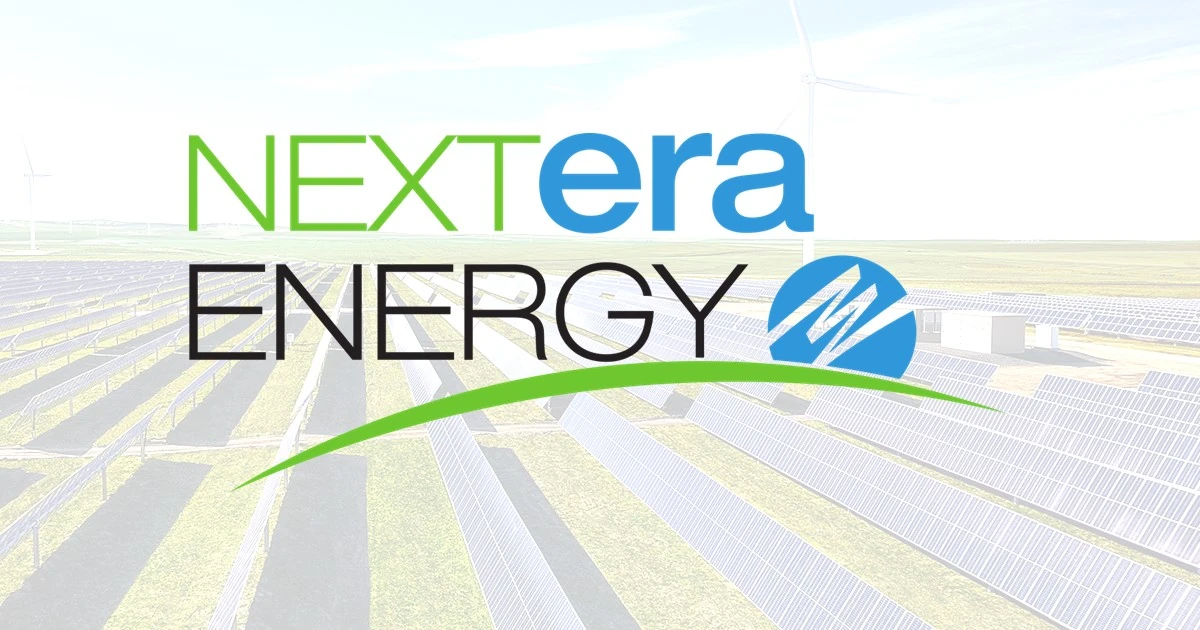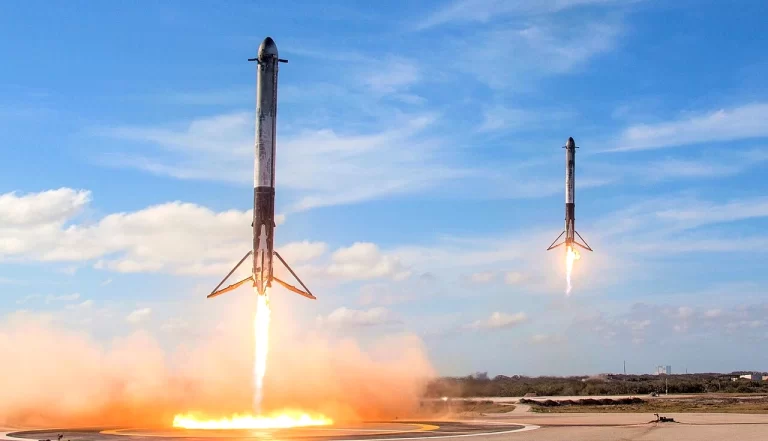NextEra Energy, headquartered in Juno Beach, Florida, is a pioneer in the renewable energy industry and one of the largest clean energy companies in the world. Known for its aggressive expansion into wind and solar energy, the company has become a key player in the global transition towards sustainable energy. This case study delves into NextEra Energy’s extensive investments in wind and solar energy, the strategies employed, the technological advancements made, and the broader implications for the energy market and the environment.
Background of NextEra Energy
Founded in 1984 as FPL Group, NextEra Energy has evolved from a traditional utility company into a leader in renewable energy. The company operates through two main subsidiaries:
- Florida Power & Light Company (FPL): The largest rate-regulated utility in Florida, serving more than 11 million people with clean, reliable, and affordable electricity.
- NextEra Energy Resources: The world’s largest generator of wind and solar energy, with operations across 36 U.S. states and four Canadian provinces.
NextEra Energy’s business model is driven by a dual focus on providing clean, affordable, and reliable energy to its customers while also expanding its portfolio of renewable energy projects across North America. The company’s commitment to sustainability and its strategic vision for the future have positioned it as a leader in the global clean energy transition.
Vision and Strategy for Renewable Energy
Strategic Objectives
NextEra Energy’s overarching goal is to lead the decarbonization of the U.S. power sector and become the world’s largest producer of clean energy from the wind, solar, and battery storage. The key elements of their strategy include:
- Significant Capital Allocation: A substantial portion of NextEra Energy’s annual capital expenditure, which has exceeded $14 billion in recent years, is dedicated to developing and acquiring renewable energy assets.
- Operational Efficiency: The company is focused on optimizing its existing renewable energy operations through the implementation of advanced technologies, such as predictive analytics, to reduce costs and enhance efficiency.
- Innovative Financing: NextEra Energy has pioneered the use of innovative financial structures, such as YieldCos, to fund renewable energy projects and reduce the cost of capital.
- Environmental Stewardship and Community Engagement: NextEra is committed to not only reducing its environmental impact but also contributing to the communities it serves through job creation, economic development, and partnerships.
Commitment to Sustainability
NextEra Energy’s approach to sustainability is multi-faceted. The company is dedicated to reducing its carbon footprint by increasing its renewable energy generation capacity and phasing out older, less efficient fossil fuel plants. It is also focused on improving energy storage solutions to support the integration of renewables into the grid.
Investment in Wind Energy
NextEra Energy is the largest producer of wind energy in North America, with a total installed capacity of over 14,000 MW from its wind farms. The company’s wind energy projects are strategically located in wind-rich regions, including Texas, Oklahoma, and the Midwest, allowing it to harness the maximum potential of wind resources.
Key Wind Energy Projects
- Horse Hollow Wind Energy Center: One of the largest wind farms in the world, Horse Hollow spans over 47,000 acres in Texas and has a capacity of 735 MW. It consists of 291 wind turbines, which together generate enough electricity to power more than 220,000 homes.
- Alta Wind Energy Center: Located in California, this complex is one of the largest onshore wind projects in the U.S., with a total capacity of over 1,550 MW. It plays a significant role in helping California achieve its renewable energy targets.
- Oklahoma Wind Energy Center: This wind farm, with a capacity of 300 MW, is another major project in NextEra Energy’s portfolio, providing enough electricity to power approximately 100,000 homes.
Technological Advancements in Wind Energy
NextEra Energy has invested in the latest wind turbine technologies, such as larger rotor diameters and higher hub heights, to increase energy capture and efficiency. The company has also implemented digital solutions like remote monitoring and predictive maintenance systems to reduce downtime and operational costs.
Economic and Environmental Impact
The company’s wind energy projects have created thousands of jobs in construction, operation, and maintenance. Additionally, these projects generate significant tax revenue for local communities, providing funding for schools, infrastructure, and other public services. Environmentally, NextEra’s wind projects prevent millions of tons of CO2 emissions each year, contributing significantly to the reduction of greenhouse gases.
Investment in Solar Energy
NextEra Energy has a rapidly growing portfolio of solar energy projects, with over 2,000 MW of installed capacity. The company’s focus has been on large-scale photovoltaic (PV) projects, primarily in states with high solar potential such as California, Nevada, and Florida.
Key Solar Energy Projects
- Desert Sunlight Solar Farm: Situated in California’s Mojave Desert, this project has a capacity of 550 MW and is one of the largest solar farms in the world. It generates enough electricity to power about 160,000 homes and significantly reduces carbon emissions.
- Manatee Solar Energy Center: This facility in Florida has a capacity of 74.5 MW and is part of NextEra’s broader initiative to position Florida as a leader in solar energy. The project is expected to save customers millions of dollars in fuel costs over its lifetime.
- Blythe Solar Energy Center: Also located in California, this project consists of four phases, with a combined capacity of 485 MW. It plays a crucial role in meeting the state’s ambitious renewable energy goals.
Innovations in Solar Energy
NextEra Energy has been at the forefront of solar technology innovations, including the use of bifacial solar panels, which capture sunlight on both sides to increase energy output. The company is also investing in energy storage solutions, such as large-scale lithium-ion batteries, to store excess solar energy and provide reliable power even when the sun is not shining.
Economic and Environmental Impact
The solar energy projects developed by NextEra have created numerous jobs in engineering, construction, and maintenance. They also generate significant economic benefits for local communities, including increased tax revenues and land lease payments to property owners. Environmentally, these projects have helped displace millions of tons of CO2 emissions, equivalent to taking hundreds of thousands of cars off the road.
Integration of Wind and Solar Energy with Battery Storage
NextEra Energy Renewable Energy Capacity Distribution
NextEra Energy’s renewable energy portfolio for 2024 is dominated by solar and wind power, which together account for 75% of the total capacity. Based on the hypothetical dataset, Solar energy leads the mix with 12,000 MW, representing 40% of the total renewable energy capacity. Wind energy closely follows with 10,500 MW, making up 35% of the capacity. Battery storage, a crucial element for ensuring grid stability and energy reliability, accounts for 15% of the capacity at 4,500 MW. Hydro energy, though a smaller part of the portfolio, contributes 10% with 3,000 MW. This diverse energy mix reflects NextEra’s strategic focus on balancing various renewable sources to create a robust and sustainable energy future.
Battery Storage Initiatives
To address the intermittency of wind and solar power, NextEra Energy has invested heavily in battery storage technology. The company has deployed several large-scale battery storage projects, including:
- Manatee Energy Storage Center: Scheduled to be one of the largest battery storage facilities in the world, this project will have a capacity of 409 MW and will help store excess solar energy for use during periods of high demand.
- Wilkinson Solar Energy Center: This project in North Carolina includes a 20 MW battery storage system that enhances the reliability and flexibility of the solar energy produced on-site.
Benefits of Battery Storage
Battery storage allows NextEra to store excess energy generated from wind and solar projects and deploy it during peak demand periods or when generation is low. This capability enhances grid stability, reduces the need for fossil fuel peaker plants, and further decreases the carbon footprint of its operations.
Market Impact and Competitive Positioning
Market Leadership
NextEra Energy’s aggressive investment in renewable energy has positioned it as a market leader not just in the United States, but globally. The company’s renewable energy capacity is larger than that of any other U.S. utility, and it continues to grow at an impressive rate.
Competitive Edge
NextEra’s scale, technological innovation, and cost efficiency give it a competitive edge over other players in the renewable energy space. The company’s ability to finance large-scale projects and its expertise in navigating regulatory environments further solidify its leadership position.
Financial Performance
NextEra Energy’s focus on renewable energy has also been rewarded financially. The company’s stock has outperformed many of its peers in the utility sector, driven by strong earnings growth from its renewable energy projects. This growth has been supported by long-term power purchase agreements (PPAs) with utilities and corporations, providing stable and predictable cash flows.
Competitive Landscape
- Duke Energy is one of NextEra Energy’s primary competitors, actively expanding its footprint in renewable energy, particularly in solar and wind projects across the southeastern United States. The company is focusing on integrating battery storage with renewable projects to enhance grid reliability and meet the rising demand for flexible energy solutions. This strategic move mirrors NextEra’s approach and sets the stage for intensified competition in the region.
- Iberdrola, through its U.S. subsidiary Avangrid, is another significant competitor, with substantial investments in onshore and offshore wind projects. The company aims to double its renewable capacity over the next few years, with a particular emphasis on the East Coast. Iberdrola’s aggressive expansion, especially in offshore wind, presents a direct challenge to NextEra’s dominance in the renewable energy sector.
- Ørsted, a global leader in offshore wind energy, is rapidly scaling its operations in the United States, particularly in the Northeast. With its extensive experience and large-scale offshore projects, Ørsted poses a formidable competition to NextEra, especially as the U.S. offshore wind market gains momentum.
Challenges and Future Outlook
Regulatory and Policy Challenges
Despite its success, NextEra Energy faces several challenges, particularly in the regulatory and policy arena. The renewable energy sector is highly dependent on government policies and incentives. Changes in tax credits, tariffs on imported solar panels, and local zoning laws can impact project viability and profitability.
Technological and Market Challenges
The integration of large amounts of renewable energy into the existing grid infrastructure presents technical challenges, such as maintaining grid stability and managing energy intermittency. Additionally, as more companies enter the renewable energy market, competition is intensifying, which could put pressure on profit margins.
Future Expansion Plans
NextEra Energy has set ambitious goals for the future, including increasing its renewable energy capacity to over 30,000 MW by 2030. The company is also exploring new opportunities in emerging technologies such as offshore wind, hydrogen, and advanced energy storage systems.
Conclusion
NextEra Energy’s heavy investment in wind and solar energy has not only transformed the company into a global leader in clean energy but has also had a significant impact on the broader energy market and the environment. By continuously innovating and expanding its renewable energy portfolio, NextEra Energy is helping to pave the way for a more sustainable and carbon-neutral future.
Recommendations for Stakeholders
For Investors
Investors should consider NextEra Energy as a long-term investment opportunity, given its strong financial performance and leadership in the renewable energy sector. The company’s strategic vision and robust project pipeline provide a promising outlook for continued growth.
For Policymakers
Policymakers should support the development of renewable energy by providing stable and long-term incentives. Policies that facilitate the integration of renewable energy into the grid and promote technological innovation will be critical in achieving climate goals.
For Communities
Local communities should actively engage with companies like NextEra Energy to maximize the economic and environmental benefits of renewable energy projects. Collaboration in areas such as workforce development, education, and environmental conservation can enhance the positive impact of these projects.




